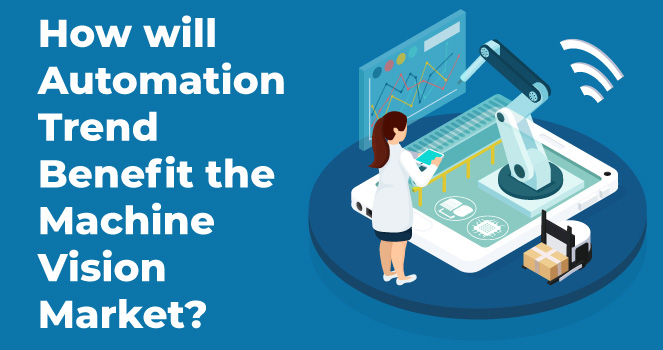



25, March 2022

Rapidly evolving technology and a digitally focused world have paved the way for advanced automation to enter the workforce. The desire to reduce human interference in various operations, with a need to fasten processes, has enhanced its demand. Automating processes with central control calls for strict inspection by using visual cameras and inspection software, and has generated the demand for machine vision.
Machine vision (MV) is a technology that facilitates a computational device to identify, assess, and analyze still or moving images. This process involves integrating several components like digital cameras, back-end hardware, and software for image processing. It enables to visually inspect products and guide robots in real time without the need for operator intervention.
According to Triton Market Research’s estimates, the global machine vision market is likely to advance with a CAGR of 7.55% during the forecasted period 2022-2028. The need for proper defect detection and the surging trend of miniaturized products are prime drivers to the market.
On the contrary, limited awareness pertaining to MV systems is vastly restraining the market’s growth. Moreover, the dearth of professionals to operate these systems and the complications encountered while deploying them also create hurdles in the growth path.
Machine vision is considered a remarkable technological advancement as it provides innovative solutions in the direction of industrial automation for various manufacturing processes. Today, various end-user verticals have incorporated machine vision technology in their processes, which has led to its increased demand. In addition, rapid development is seen in MV technology. Thus, newer types of imaging systems are available today, with robust components, and are used for a range of purposes, thereby creating greater benefits for the users.
In this global race towards greater automation, machine vision is not only being used in traditional industrial sectors, but is also conquering brand new areas. Several organizations are using these advanced systems in a bid to reduce manufacturing cost & time, enhance flexibility, gain better process control, and easily oversee daily processes. This is facilitating the shift towards upgradation to completely automated ‘smart’ factories to stay ahead of intense competition.
Additionally, with high market attractiveness, numerous global players have begun investing heavily in the machine vision market. They are also engaging in research and development activities to make their systems more efficient and cost-effective. The adoption of automation by the manufacturing sector has thus led to a technological renaissance, thereby propelling the growth of the machine vision market.
1D, 2D, and 3D are the different types of machine vision systems used.
Automotive, electronics & semiconductors, healthcare, food & packaging, and other industries are the key areas where machine vision systems are being adopted.

Prevalent cases of terrorist attacks in today’s world is increasing the need for severe standards of security for public safety, and the global market for biometric technology scrupulously accommoda..
Prevalent cases of terrorist attacks in today’s world is increasing the need for..